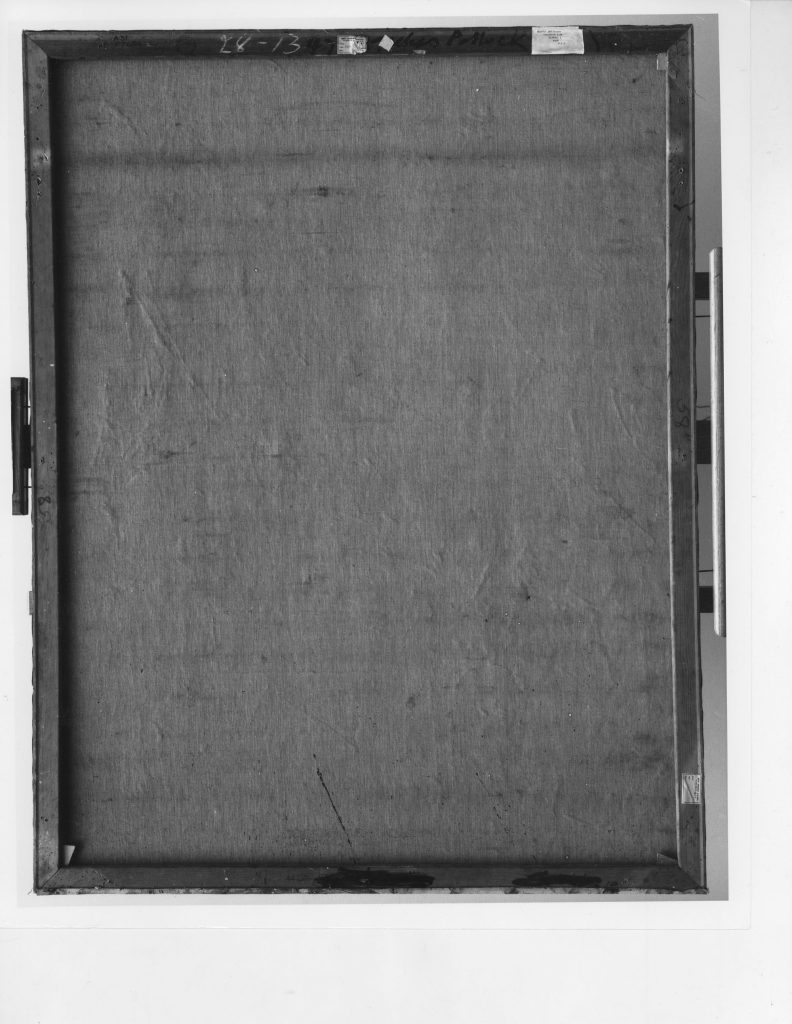Sea Change
Conservation History

Sea Change Seattle Art Museum (reverse) Before 1977 Conservation Treatment Photo: Eduardo Calderon.
Because of the inherent fragility of its materials and structure and because Sea Change traveled to 21 different cities in 6 countries and 2 continents by the mid 1970’s, the painting became weakened and required conservation treatment. This photo of the reverse of the painting shows lines from where Pollock’s heavy paint shrank and distorted the canvas. To strengthen the structure of the painting, conservators in 1977 mounted it to a solid panel, a treatment which covered or removed gallery labels, inscriptions, a custom stamp, and the artist’s signature “’47 Jackson Pollock.”

Sea Change lit from the side to show glossy varnish covering the surface.
To prevent the pebbles from falling from the painting, to give it structural stability and to protect its surface, the conservator in 1977 skillfully adhered Sea Change to the panel with a special wax-resin adhesive and varnished the entire surface with a protective polymer resin. Though following typical conservation treatments at the time to use a synthetic resin that would not turn yellow like natural resins would, time has shown that this varnish imbibes dirt and becomes very difficult to remove over time.

Sea Change paint cross-sections under ultra-violet fluorescence light shows layer of varnish on top of the paint.
